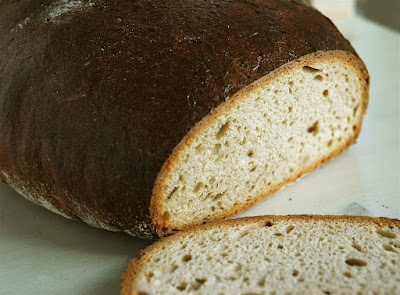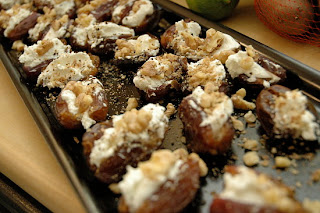
Summer has come to an end and before you settle into the mild weather of fall and sweater comfort of winter, you decide to make one last commitment to eating better and exercising more. Too many ice cream cones, too many barbecue parties and eratic eating habits over the summer have left you wanting for a little diet adjustment. Let's look together at the easy steps you can take to reset your food clock and calorie intake so you can shed those gelati pounds the healthy way.
First, you need to determine how much you need to eat in one day in order to maintain your current weight. There are very accurate textbook equations to do this, but they are quite involved and require more data then we usually have on hand. I have been using this calculator from FitSugar with my clients for quite some time now and with great success. It calculates how much water you need, your BMI (Body Mass Index), your target heart rate for your workouts and how many calories you need per day to maintain. I know, I know....some of us are maintaining but most want to lose. In that regard, look at the base number of calories you need for the day and substract 300-500, never letting your calorie intake fall bellow 1200 for women (1500 is a good number for most) and 1800 for men.
Once you have determined how many calories you need for the day, sit back and think about your own schedule, not what magazines and well-intentioned people say. Seriously, we read all the time that we should eat 5-6 small meals a day. What I encounter in reality is clients who tell me they don't understand that by eating "5-6 meals" a day like articles recommend they are still not losing weight. See the missing word..."small meals". Take you calorie intake and divide it into 3 main meals plus two snacks and you should end up with relatively small portions. This is more realistic than thinking that we have to eat 5-6 whole meals throughout the day. Here is what I suggest to my clients: eat breakfast, lunch and dinner and plan on carry-on or easy to access snacks for a mid-morning tie-over until lunch and an afternoon pre-workout snack. Don't eat the snack if you are not hungry or feel like you don't really need them. Distance yourself from food because it is there but use it to fuel your metabolism throughout the day. It's not because you don't eat your two snacks one day that your metabolism is going to come to a full slow down...it takes months so relax. Snacks are here to sustain your energy levels and prevent you from dipping too low into your blood sugar resources. Follow your activities and how much effort they require and make sure you drink before you eat...sometimes we are just dehydrated, plain and simple.
Allright, so you got your calories, you have looked at your activity level, you have divided your meals throughout the day to make sure that you don't run out of fuel (so to speak)....one more thing to do:
Divide your total calorie intake for the day into a balanced ratio of protein/carbs/fat for your day. If you want to follow a balanced diet (forget fads, they don't teach you healthy living in the long run), carbs should be 45%-65%, proteins about 20% and fat less than 30% of your daily intake. Now spread those numbers over 3 to 5 meals and you are set for the day. A good rule to follow is to have protein/carbs/fat at every meal, as the combination of all three really help you feel fuller longer and makes sure that you are served the right nutrients, vitamins and minerals to operate at maximum power throughout the day.
Here is a sample daily meal plan for one of my clients after we cleaned up her eating habits:
Breakfast: Choose one
1 cup whole grain cereal (with less than 6 grams of sugar)
1 cup skim milk
1 cup strawberries or one half banana
Or
3 egg whites
2 Tb reduced fat shredded cheese
1 slice whole wheat toast
1 Tb. light butter spread
1/2 grapefruit
Lunch: choose one
Turkey Sandwich:
4 oz sliced turkey breast
1 slice reduced fat cheese
1 Tb reduced fat mayo
1 Tb dijon mustard
3 lettuce leaves
3 slices tomato
2 slices whole wheat bread
Or
4 cups mixed greens
1/2 cup bell peppers, cored, seeded and chopped
1/4 cucumber, sliced
1/4 cup sliced onion
1/2 tomato, sliced
1 cup cooked chicken
2-4 Tbs low calorie dressing
1/4 to 1/2 cup canned chickpeas, balck beans, corn, peas, edamame,...
Dinner: Choose one
Pizza with side salad
2 slices thin crust cheese or vegetable pizza
2 cups mixed greens
1/4 cucumber, sliced
1/2 tomato, sliced
2 tsp. olive oil
Or
5 oz roasted chicken
1/2 cup rice or 1 small baked potato
1 cup steamed green beans
1 tsp. olive oil
Snack ideas: (have 2 ready for the day)
1 small container low fat yogurt + 1 medium banana
or
1 granola bar + 1 orange
or
4 Ry Krisp type crackers + 2 Laughing Cow Original swiss wedges
or
1 small apple, sliced + 1 Tb. peanut butter
These are just suggestions. It takes time, trial and error to know what works for you and how you need to balance all the ratios necessary for your body to work at its optimum capacity. My advice is to write down what you typically eat and see what calories you can scratch such as refined sugar, fat ladden dressings, useless croutons and extra butter, etc... Plan for a treat once a week and enjoy a small portion of it. Soon, these changes won't feel like sacrifices anymore and will become second nature. Trust me. You are worth it!
Are you interested in contributing to The Daily Tiffin? Drop us an email: blogmeeta@gmail.com. We look forward to hearing your ideas.
This Post was written by Helen from Tartelette.
First, you need to determine how much you need to eat in one day in order to maintain your current weight. There are very accurate textbook equations to do this, but they are quite involved and require more data then we usually have on hand. I have been using this calculator from FitSugar with my clients for quite some time now and with great success. It calculates how much water you need, your BMI (Body Mass Index), your target heart rate for your workouts and how many calories you need per day to maintain. I know, I know....some of us are maintaining but most want to lose. In that regard, look at the base number of calories you need for the day and substract 300-500, never letting your calorie intake fall bellow 1200 for women (1500 is a good number for most) and 1800 for men.
Once you have determined how many calories you need for the day, sit back and think about your own schedule, not what magazines and well-intentioned people say. Seriously, we read all the time that we should eat 5-6 small meals a day. What I encounter in reality is clients who tell me they don't understand that by eating "5-6 meals" a day like articles recommend they are still not losing weight. See the missing word..."small meals". Take you calorie intake and divide it into 3 main meals plus two snacks and you should end up with relatively small portions. This is more realistic than thinking that we have to eat 5-6 whole meals throughout the day. Here is what I suggest to my clients: eat breakfast, lunch and dinner and plan on carry-on or easy to access snacks for a mid-morning tie-over until lunch and an afternoon pre-workout snack. Don't eat the snack if you are not hungry or feel like you don't really need them. Distance yourself from food because it is there but use it to fuel your metabolism throughout the day. It's not because you don't eat your two snacks one day that your metabolism is going to come to a full slow down...it takes months so relax. Snacks are here to sustain your energy levels and prevent you from dipping too low into your blood sugar resources. Follow your activities and how much effort they require and make sure you drink before you eat...sometimes we are just dehydrated, plain and simple.
Allright, so you got your calories, you have looked at your activity level, you have divided your meals throughout the day to make sure that you don't run out of fuel (so to speak)....one more thing to do:
Divide your total calorie intake for the day into a balanced ratio of protein/carbs/fat for your day. If you want to follow a balanced diet (forget fads, they don't teach you healthy living in the long run), carbs should be 45%-65%, proteins about 20% and fat less than 30% of your daily intake. Now spread those numbers over 3 to 5 meals and you are set for the day. A good rule to follow is to have protein/carbs/fat at every meal, as the combination of all three really help you feel fuller longer and makes sure that you are served the right nutrients, vitamins and minerals to operate at maximum power throughout the day.
Here is a sample daily meal plan for one of my clients after we cleaned up her eating habits:
Breakfast: Choose one
1 cup whole grain cereal (with less than 6 grams of sugar)
1 cup skim milk
1 cup strawberries or one half banana
Or
3 egg whites
2 Tb reduced fat shredded cheese
1 slice whole wheat toast
1 Tb. light butter spread
1/2 grapefruit
Lunch: choose one
Turkey Sandwich:
4 oz sliced turkey breast
1 slice reduced fat cheese
1 Tb reduced fat mayo
1 Tb dijon mustard
3 lettuce leaves
3 slices tomato
2 slices whole wheat bread
Or
4 cups mixed greens
1/2 cup bell peppers, cored, seeded and chopped
1/4 cucumber, sliced
1/4 cup sliced onion
1/2 tomato, sliced
1 cup cooked chicken
2-4 Tbs low calorie dressing
1/4 to 1/2 cup canned chickpeas, balck beans, corn, peas, edamame,...
Dinner: Choose one
Pizza with side salad
2 slices thin crust cheese or vegetable pizza
2 cups mixed greens
1/4 cucumber, sliced
1/2 tomato, sliced
2 tsp. olive oil
Or
5 oz roasted chicken
1/2 cup rice or 1 small baked potato
1 cup steamed green beans
1 tsp. olive oil
Snack ideas: (have 2 ready for the day)
1 small container low fat yogurt + 1 medium banana
or
1 granola bar + 1 orange
or
4 Ry Krisp type crackers + 2 Laughing Cow Original swiss wedges
or
1 small apple, sliced + 1 Tb. peanut butter
These are just suggestions. It takes time, trial and error to know what works for you and how you need to balance all the ratios necessary for your body to work at its optimum capacity. My advice is to write down what you typically eat and see what calories you can scratch such as refined sugar, fat ladden dressings, useless croutons and extra butter, etc... Plan for a treat once a week and enjoy a small portion of it. Soon, these changes won't feel like sacrifices anymore and will become second nature. Trust me. You are worth it!
Are you interested in contributing to The Daily Tiffin? Drop us an email: blogmeeta@gmail.com. We look forward to hearing your ideas.
This Post was written by Helen from Tartelette.

















